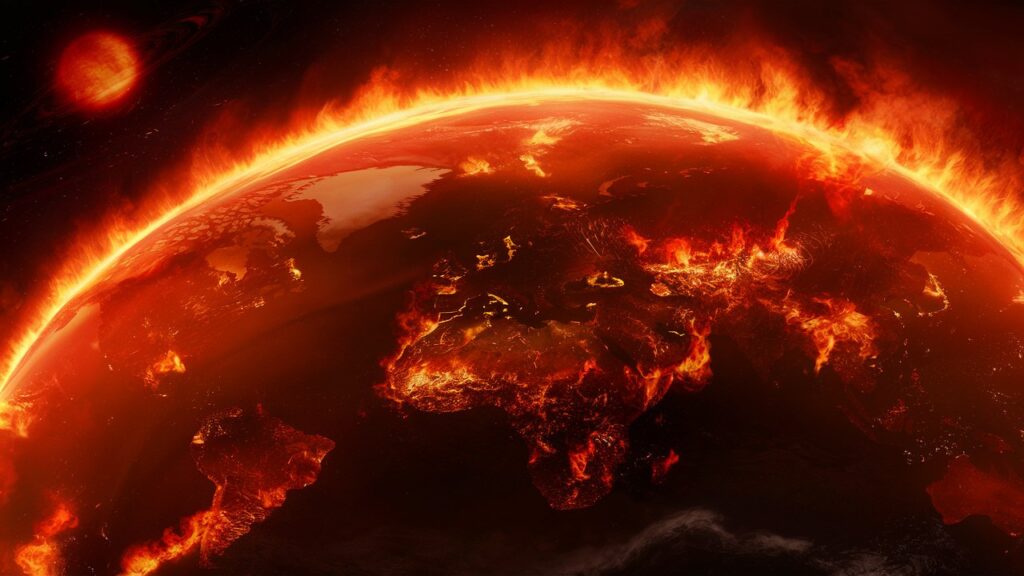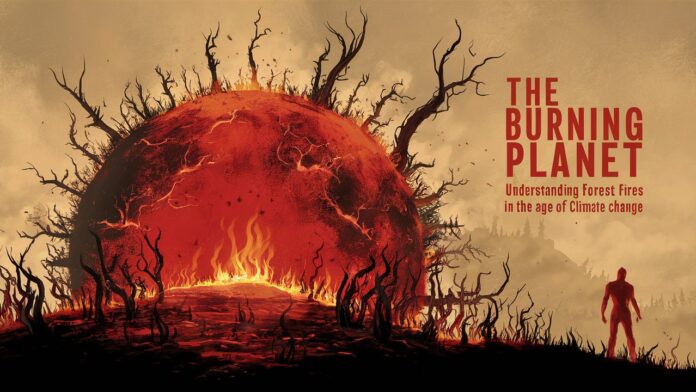Introduction: Igniting the Crisis
Forest fires, once natural ecological regulators, have transformed into catastrophic forces reshaping landscapes and lives globally. As record-breaking infernos torch ecosystems from California’s sequoia groves to Siberian permafrost and Australian eucalyptus forests, scientists confirm an alarming trend: climate change has fundamentally altered fire behavior. The convergence of human activity, poor land management, and accelerated global warming has created a vicious cycle where fires burn hotter, faster, and longer than ever recorded. This article examines the complex anatomy of modern wildfires—from their climate-driven triggers to their planetary consequences—and explores solutions to break this destructive cycle.
1. The Climate Change Connection: Fueling the Flames
Rising global temperatures act as a primary accelerant for modern wildfires. As greenhouse gases accumulate, they create warmer, drier conditions that transform vegetation into tinder. Research reveals that each 1°C temperature increase can expand annual burned areas by up to 600% in western U.S. forests 1. Snowpacks diminish and melt earlier, extending fire seasons by over a month compared to 35 years ago 7. Crucially, nighttime temperatures have risen significantly, enabling fires to burn through the night rather than naturally subsiding—a key factor behind unprecedented “megafires” 7. The consequences are quantifiable: between 1984–2015, climate change doubled large western U.S. fires, while Canada’s 2023 fires alone released 640 million metric tons of carbon—exceeding fossil fuel emissions of major nations 157.
2. Human Ignition: The Unnatural Spark
While climate creates conditions, human actions provide the sparks. An astonishing 84–95% of U.S. wildfires originate from human activities 4, including:
- Infrastructure failures: Downed power lines spark California’s deadliest blazes, while dragging trailer chains ignite roadside fires 4.
- Reckless practices: Unattended campfires, debris burning (29% of national ignitions), and discarded cigarettes 4.
- Urban encroachment: Expanding developments into wildlands place more people and ignition sources near fire-prone forests 110.
Compounding this, a century of fire suppression policies created dangerous “fuel loads” of dead wood and undergrowth. Logging-damaged forests and invasive species further increase flammability 24.
3. Ecological Paradox: Fire’s Dual Nature
Fire remains essential for many ecosystems when occurring naturally. Low-intensity burns clear invasive species, release soil nutrients, and trigger seed germination in pyrophilic trees like lodgepole pines, whose cones open only in extreme heat 4. However, climate-amplified fires now exceed historical intensity and frequency, causing “compromised state” ecosystems 2. Boreal forests that stored carbon for millennia now release it catastrophically. Tropical rainforests—where fires are unnatural—burn with devastating biodiversity loss. Critically, when fires recur too frequently, plants cannot mature to reseed burned areas, causing permanent forest loss and carbon sink degradation 12.

4. Health and Economic Infernos
Wildfire impacts extend far beyond burned acreage:
- Toxic Smoke: Wildfire plumes carry PM2.5, black carbon, NO₂, and carcinogens. In 2023, Canadian smoke enveloped U.S. cities 1,000 miles away, triggering asthma emergencies and school closures 59. Particulate matter causes systemic inflammation linked to cardiac arrest, cognitive decline, and premature death 9.
- Water Contamination: Melting plastic pipes and depositing benzene into watersheds creates long-term carcinogenic risks 1.
- Economic Devastation: Since 2000, 15 U.S. fires exceeded $1 billion each in damages. Firefighting costs now consume 50% of the U.S. Forest Service budget, up from 15% historically 1. Chile’s 2024 fires caused $4.39 billion in losses, while global wildfire costs exceed $50 billion annually 5.
5. Breaking the Cycle: Management and Mitigation Strategies
Combating the wildfire crisis requires integrated approaches:
- Forest Resilience: Prescribed burns mimic natural fires to clear fuels. Thinning dense understories prevents “ladder fires” from reaching crowns. Post-fire recovery plans reduce erosion 14.
- Community Adaptation: Implementing defensible space around homes, fire-resistant building materials, and zoning restrictions in high-risk areas 110.
- Climate Action: Reducing black carbon emissions could immediately slow glacial melt and Arctic warming linked to boreal fires 5. Meeting Paris Agreement goals remains critical to limit temperature rise.
- Global Cooperation: Systems like NASA’s FIRMS provide real-time fire tracking, while the Global Wildfire Information System standardizes international responses 7. The U.N.’s “Fire Ready Formula” advocates dedicating 66% of funding to prevention—not just suppression 5.
Conclusion: Embracing Fire in a Flammable World
Forest fires are not inherently destructive; they are Earth’s ancient renewal mechanism. Yet human disruptions have turned this force against us. Surviving the pyrocene era demands rethinking our relationship with fire: restoring prescribed burns, redesigning fire-adaptive communities, and relentlessly combating climate change. As Indigenous knowledge long recognized, living with fire means respecting its power while intelligently managing its place in our landscapes. The path forward requires not just suppression, but symbiosis—before our forests burn beyond recovery.
Frequently Asked Questions
Q1: How exactly does climate change worsen wildfires?
Climate change intensifies the “fire weather triangle”: higher temperatures dry soils and vegetation; earlier snowmelt extends dry seasons; and altered rainfall patterns create drought-stressed forests. These factors allow fires to ignite easier, spread faster, and burn more intensely. In temperate zones, fire seasons now last year-round 1710.
Q2: Are all wildfires harmful?
No. Ecologically beneficial fires occur naturally via lightning, clearing dead biomass, recycling nutrients, and maintaining habitats. Problems arise when human-ignited fires combine with climate-altered conditions to create unnaturally massive blazes that destroy mature seed trees and soil integrity 24.
Q3: How can I protect my health from wildfire smoke?
Use air quality apps (AirNow, IQ Air) with NASA/NOAA data for real-time PM2.5 levels. Indoors, use HEPA purifiers and seal windows. Outdoors, wear N-95 masks. High-risk groups (asthmatics, pregnant people, outdoor workers) should prioritize evacuation during smoke events 79.
Q4: What policy changes could reduce wildfire risks?
Key solutions include: adopting the U.N.’s Fire Ready Formula (2/3 funding for prevention); enforcing defensible-space zoning; subsidizing home retrofits; preserving mature carbon-rich forests; and integrating fire management with climate policies like REDD+ 1510.
Q5: Can forests recover after megafires?
Ecological recovery depends on fire severity and frequency. Some ecosystems rebound in years, but increasingly intense burns sterilize soils and destroy seed banks. When fires recur before maturity (e.g., <15 years in western forests), forests may shift permanently to shrublands—releasing stored carbon irreversibly 12.

